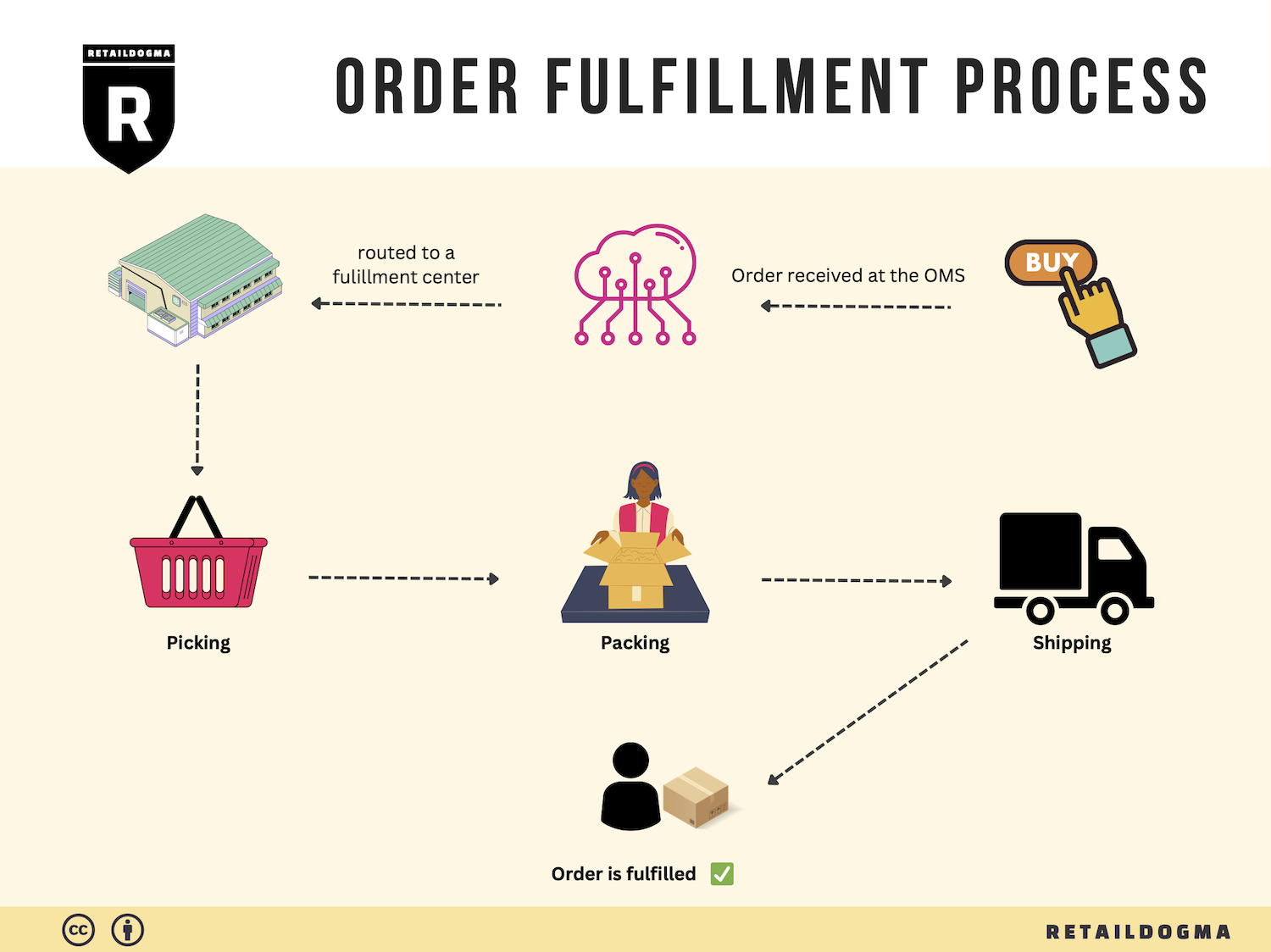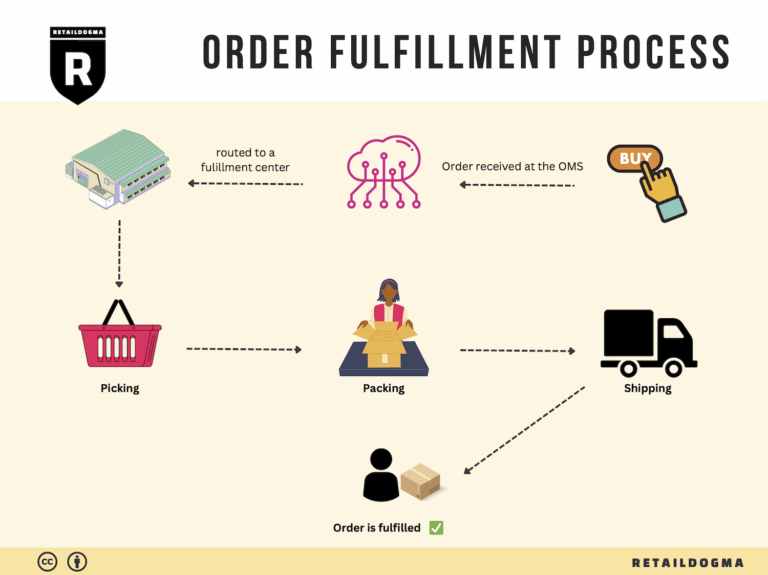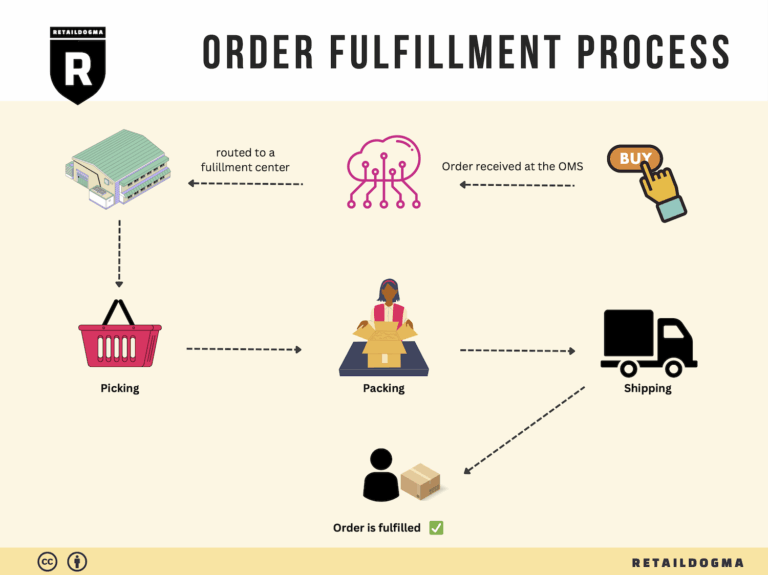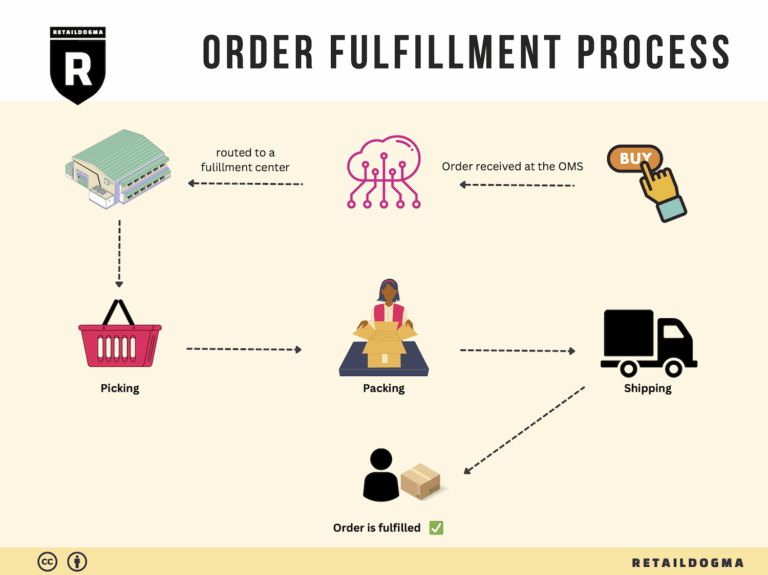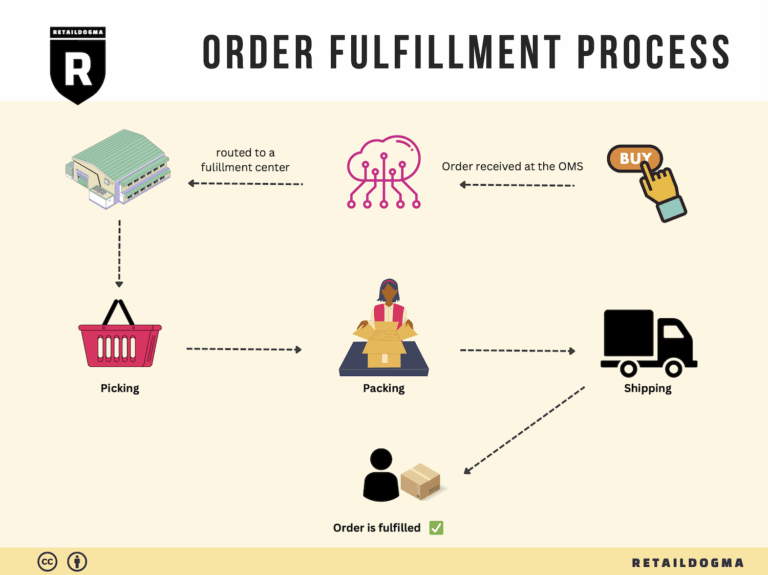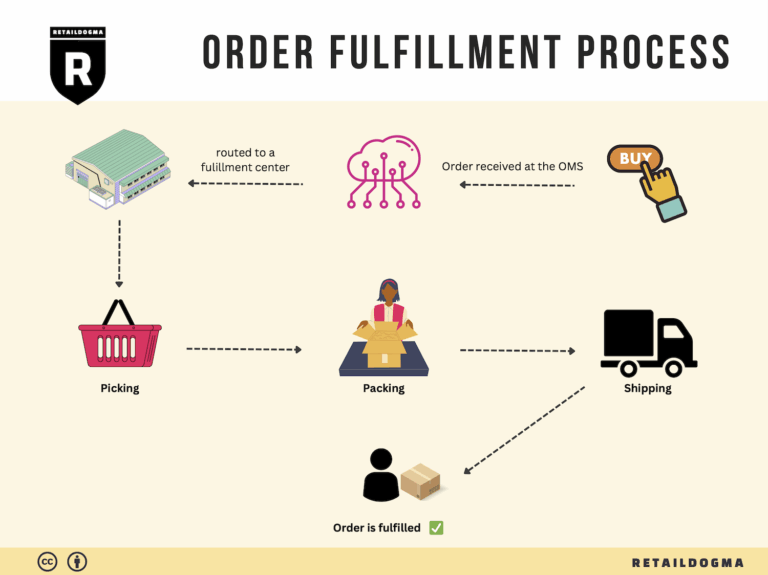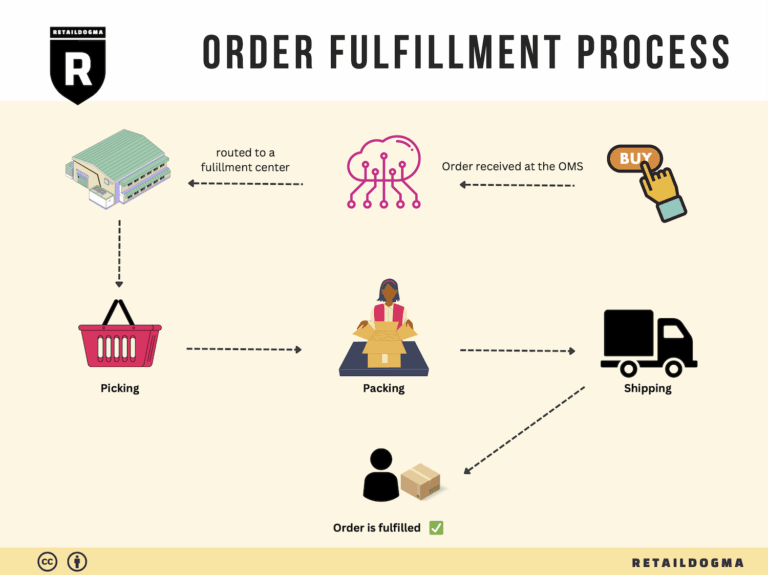How Order Fulfillment Works: A Step-by-Step Guide for Businesses
What is E-commerce Fulfillment? An Introduction for Growing Businesses
As e-commerce businesses grow, many owners and operations managers find themselves grappling with the complexities of packing and shipping orders. The excitement of increased sales can quickly turn into overwhelm as the logistics of fulfillment become a daunting task. Whether you’re managing a few orders a day or hundreds, the process of getting products into customers’ hands can feel like a significant burden. However, understanding the fulfillment process can turn this challenge into an opportunity for growth.
Understanding E-commerce Fulfillment
E-commerce fulfillment is simply the process of getting a product from your inventory to your customer. This encompasses everything from receiving an order, picking and packing the product, shipping it, and managing returns. For growing businesses, mastering fulfillment is crucial not only for operational efficiency but also for enhancing customer satisfaction and loyalty.
This guide will delve into the various fulfillment models available to e-commerce businesses, including Third-Party Logistics (3PL) and Fulfillment by Amazon (FBA). Each model offers unique advantages and caters to different business needs, allowing you to find the right fit for your operations.
Core Fulfillment Services
We will explore the core services integral to e-commerce fulfillment, such as order processing, inventory management, pick and pack services, and shipping logistics. Understanding these services will help you streamline your operations and ensure a seamless experience for your customers.
Choosing the Right Fulfillment Partner
Selecting the right fulfillment partner is a pivotal decision for any growing business. This guide will provide practical tips on what to look for in a fulfillment provider, including scalability, technology integration, and customer support. Your choice of partner can significantly impact your efficiency, cost-effectiveness, and ultimately, your brand reputation.
Pricing Considerations
Pricing is another critical aspect we will cover. We will break down the various costs associated with fulfillment services, helping you understand how to budget for logistics without compromising service quality.
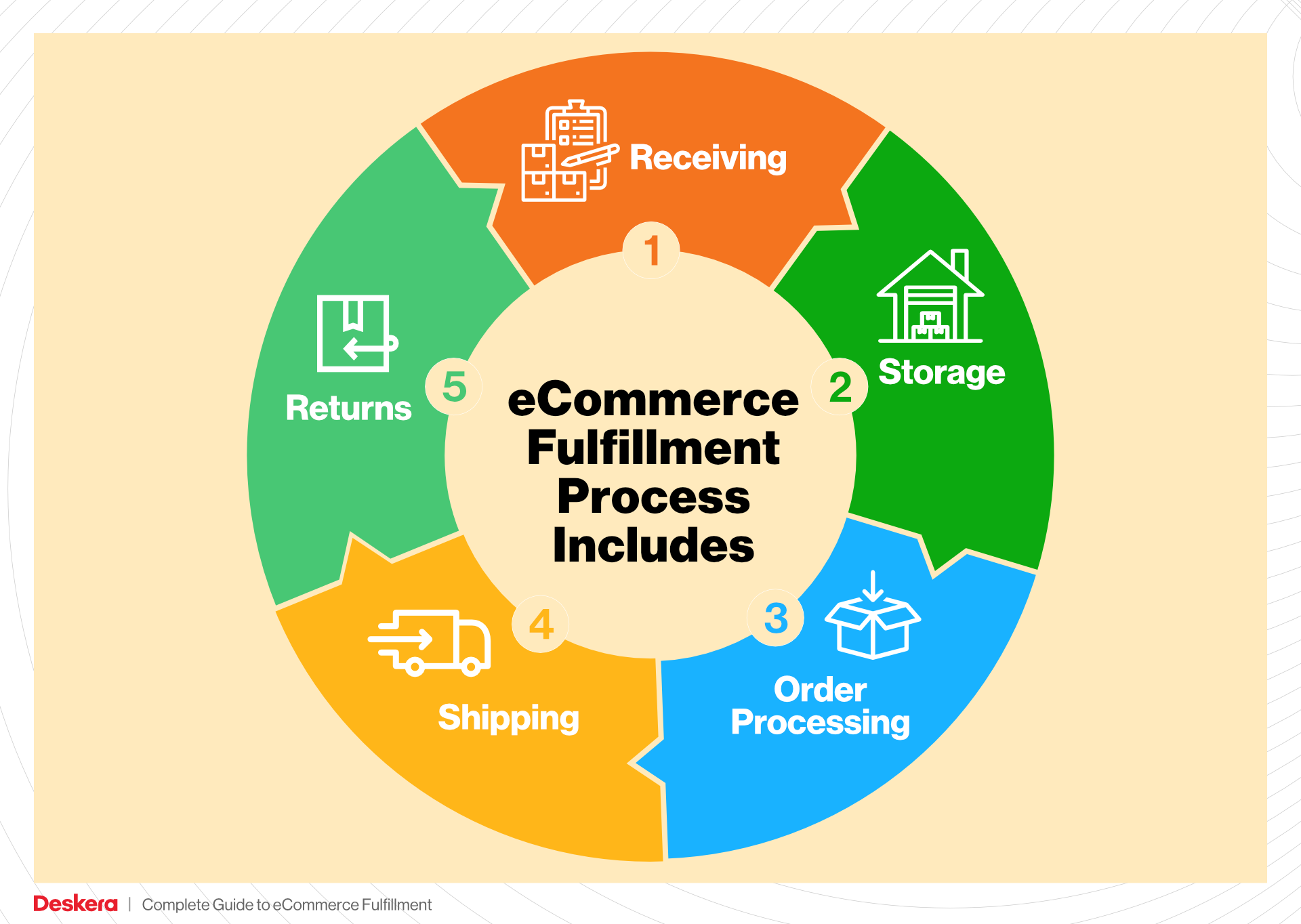
Empowering Your Business Decisions
The ultimate goal of this guide is to empower you to make informed decisions about your logistics and fulfillment strategy. By equipping yourself with the right knowledge, you can enhance your operational efficiency, improve customer satisfaction, and position your business for sustainable growth in the competitive e-commerce landscape.
What You’ll Learn In This Guide
- What is E-commerce Fulfillment? An Introduction for Growing Businesses
- The Order Fulfillment Process: From ‘Buy’ Button to Customer’s Door
- Comparing Fulfillment Models: In-House vs. 3PL vs. Dropshipping
- A Deep Dive into Amazon FBA: Pros, Cons, and Who It’s For
- Core Services Offered by Fulfillment Centers
- How to Choose a Fulfillment Partner: A 6-Point Checklist
- Understanding Fulfillment Pricing: A Breakdown of Common Fees
- Frequently Asked Questions (FAQs) about Fulfillment
- Conclusion: Is Outsourcing Fulfillment the Right Move for Your Business?
- Important Disclaimer
The Order Fulfillment Process: From ‘Buy’ Button to Customer’s Door
1. Receiving Inventory
The order fulfillment process begins with receiving inventory, which is a crucial step in establishing a reliable supply chain. When products arrive at the fulfillment center, they must be checked against purchase orders to ensure accuracy. This involves verifying quantities, inspecting for damage, and confirming that the correct items have been delivered. A key term associated with this process is SKU (Stock Keeping Unit), which is a unique identifier for each product variant, allowing for efficient tracking and management.
Proper inventory receiving is essential for several reasons. First, it helps maintain accurate inventory records, which is vital for effective stock management and forecasting. Second, it lays the groundwork for a seamless order fulfillment process by ensuring that the right products are available when customers place orders. Any discrepancies at this stage can lead to significant delays down the line, impacting customer satisfaction and potentially harming your brand’s reputation.
2. Warehouse Storage
Once the inventory has been successfully received and verified, it is stored in the warehouse. This phase involves organizing products in a manner that maximizes space efficiency and facilitates easy access. Effective warehouse storage solutions often employ techniques such as ABC analysis, which categorizes inventory based on importance and turnover rates.
The importance of warehouse storage cannot be overstated. An organized storage system allows for faster order processing and minimizes the time required to locate products. Additionally, it aids in maintaining optimal inventory levels, reducing carrying costs associated with overstocking. By implementing an efficient storage strategy, businesses can improve their overall operational efficiency, ensuring that products are readily available when orders come in.
3. Order Picking
When a customer places an order, the next step is order picking, which involves selecting the correct items from the warehouse to fulfill the order. This process can be streamlined through the use of pick lists, which are documents or digital notifications that detail the items needed for each order, along with their locations within the warehouse.
Order picking is critical because it directly affects the accuracy and speed of order fulfillment. Errors made during this stage can lead to incorrect shipments, resulting in returns, refunds, or customer dissatisfaction. To enhance the picking process, many fulfillment centers utilize technology such as handheld scanners and automated picking systems that provide real-time inventory updates and ensure that the correct items are selected. Efficient order picking not only improves operational performance but also plays a significant role in customer satisfaction, as accurate and timely deliveries are essential in today’s competitive e-commerce landscape.
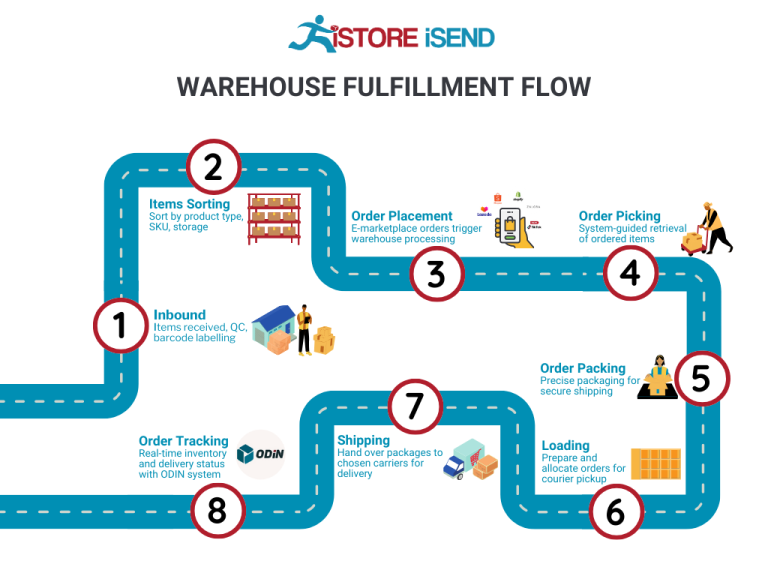
4. Order Packing
After the items have been picked, they move to the order packing stage. This process involves carefully packing the products to ensure they arrive at the customer’s location in perfect condition. Key considerations during packing include choosing the right packaging materials, ensuring that items are securely packed, and including any necessary documentation such as invoices or return labels. The use of pack slips, which detail the contents of the shipment, is also common during this stage.
Order packing is important for several reasons. First, proper packing protects products from damage during transit, which can lead to costly returns and diminished customer trust. Second, it is an opportunity to reinforce your brand’s image through thoughtful packaging that may include branding elements or promotional materials. A well-executed packing process contributes to a positive unboxing experience, which can increase customer loyalty and encourage repeat purchases.
5. Shipping & Delivery
The final step in the order fulfillment process is shipping and delivery, which involves transporting the packed orders to the customer’s doorstep. This phase includes selecting the appropriate shipping method based on factors such as delivery speed, cost, and destination. Key terms relevant to this step include last-mile delivery, which refers to the final leg of the delivery journey, and tracking numbers, which provide customers with real-time updates on their order status.
Shipping and delivery are crucial for ensuring customer satisfaction. In an era where consumers expect fast and reliable service, having efficient logistics in place can set your business apart from competitors. A streamlined shipping process not only helps meet customer expectations but also reduces operational costs through optimized carrier selection and route planning. By investing in effective shipping solutions, businesses can enhance their reputation and drive customer loyalty, leading to increased sales and growth in the long term.
In conclusion, understanding and optimizing each step of the order fulfillment process—from receiving inventory to shipping and delivery—is essential for e-commerce businesses looking to scale. By focusing on accuracy, efficiency, and customer satisfaction at every stage, you can create a robust fulfillment operation that supports your growth objectives.
Comparing Fulfillment Models: In-House vs. 3PL vs. Dropshipping
Fulfillment Model Comparison
| Model | Who Handles Inventory | Best For (Business Stage) | Key Advantage | Key Disadvantage |
|---|---|---|---|---|
| In-House Fulfillment | The business itself | Established businesses with stable demand | Full control over inventory and operations | High overhead costs and resource intensity |
| Third-Party Logistics (3PL) | External fulfillment partner | Growing businesses looking to scale | Scalability and flexibility | Less control over fulfillment processes |
| Dropshipping | Supplier or manufacturer | Startups and low-capital businesses | Low upfront investment and risk | Longer shipping times and potential stock issues |
In-House Fulfillment
In-house fulfillment refers to a model where a business manages its entire fulfillment process internally. This approach is common among established businesses that have achieved a stable demand for their products. With in-house fulfillment, companies maintain complete control over inventory, order processing, and shipping logistics. This model allows for tailored customer experiences, as businesses can optimize their processes to meet specific consumer needs and preferences.
However, the key disadvantage is the high overhead costs associated with staffing, warehousing, and technology. Companies must invest in physical space, equipment, and a trained workforce, which can be resource-intensive. Additionally, as order volumes fluctuate, businesses may find it challenging to adapt quickly to changing demands. This can lead to inefficiencies and potential customer dissatisfaction if the fulfillment process cannot keep pace with expectations.
Third-Party Logistics (3PL)
Third-party logistics (3PL) involves outsourcing the logistics and fulfillment processes to an external partner. This model is particularly advantageous for growing businesses that are looking to scale without the heavy burden of managing logistics internally. 3PL providers typically offer a range of services, including inventory management, order processing, and shipping, which can significantly streamline operations and reduce lead times.
The primary advantage of using a 3PL is scalability. As your business grows, a 3PL can easily adapt to increased order volumes without requiring additional investments in infrastructure. Moreover, 3PLs often have established relationships with carriers and can negotiate better shipping rates, further enhancing cost efficiency. However, one of the key disadvantages is that businesses relinquish some control over their fulfillment processes. This can lead to challenges in maintaining brand consistency and ensuring quality service, as the 3PL may not always align perfectly with the company’s operational goals.
Dropshipping
Dropshipping is a fulfillment model where the retailer does not keep products in stock but instead transfers customer orders directly to a supplier, who then ships the products to the customer. This model is particularly appealing to startups or entrepreneurs with limited capital, as it requires minimal upfront investment. Retailers can offer a wide array of products without the need to manage inventory, which significantly reduces financial risk.
The key advantage of dropshipping is the low barrier to entry. Entrepreneurs can test new markets and product lines without the financial commitment of purchasing inventory upfront. Additionally, it allows for a more extensive product catalog without the associated storage costs. However, dropshipping has its disadvantages, such as longer shipping times, which can frustrate customers. Moreover, reliance on suppliers for inventory management can lead to issues with stock availability, resulting in potential order cancellations and customer dissatisfaction.
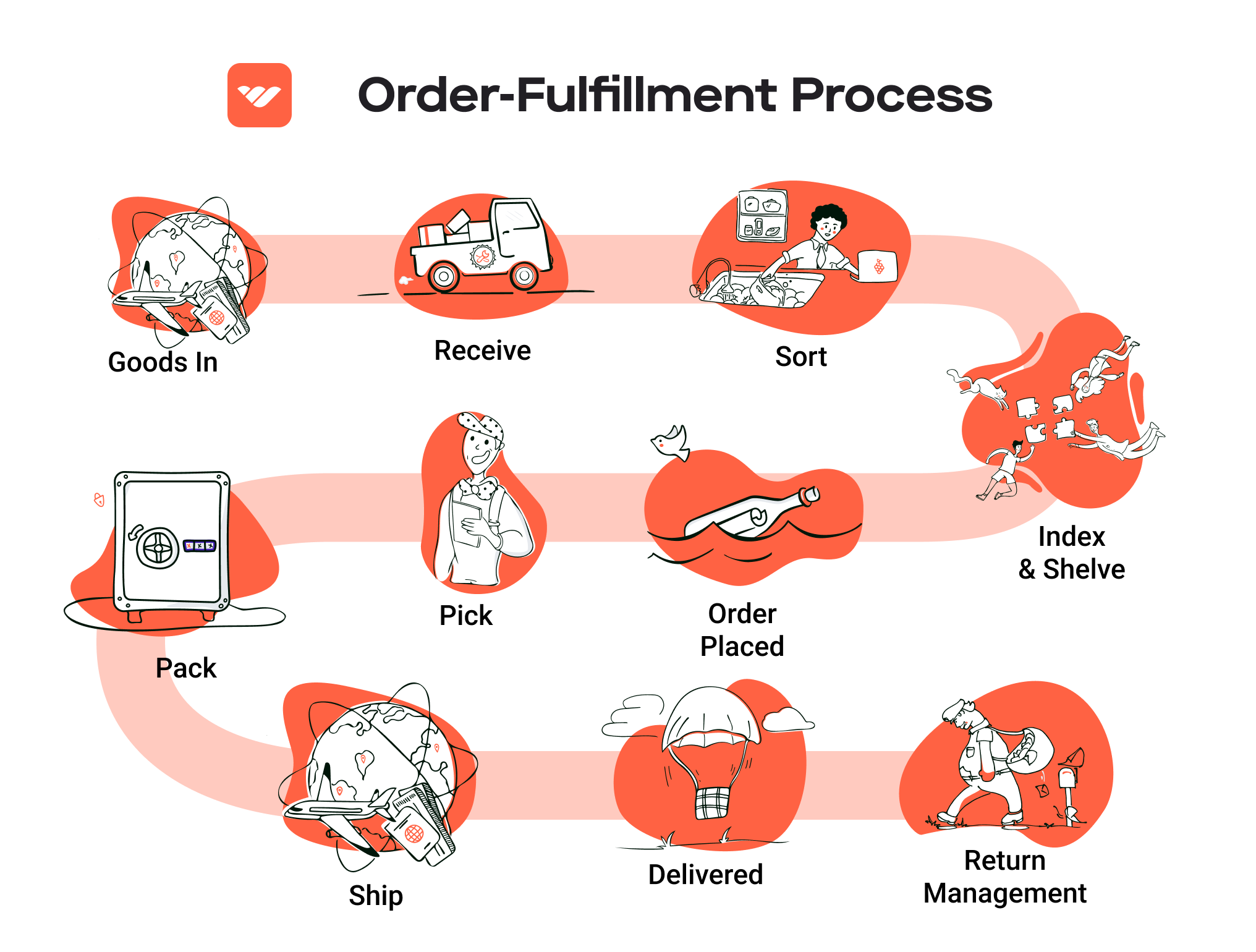
A Deep Dive into Amazon FBA: Pros, Cons, and Who It’s For
Understanding Fulfillment by Amazon (FBA)
Fulfillment by Amazon (FBA) is a logistics service offered by Amazon that allows sellers to store their products in Amazon’s fulfillment centers. Amazon then takes care of storage, packaging, and shipping directly to customers. This service is particularly appealing for e-commerce businesses looking to scale their operations quickly and efficiently.
When a customer places an order for a product fulfilled by Amazon, the item is picked, packed, and shipped by Amazon’s team. Sellers benefit from Amazon’s extensive logistics network and customer service capabilities, which can significantly enhance their overall business performance.
How FBA Works
-
Account Setup: Sellers begin by creating an Amazon Seller account and enrolling in the FBA program. They can choose which products they want to fulfill through FBA.
-
Inventory Preparation: Sellers prepare their products according to Amazon’s requirements, including labeling and packaging specifications. This step is crucial for ensuring compliance and avoiding delays.
-
Shipping Inventory: Once products are prepared, sellers ship them to Amazon’s designated fulfillment centers. Amazon provides guidance on how to ship items to optimize costs and efficiency.
-
Storage and Fulfillment: Amazon stores the products in its warehouses. When an order is placed, Amazon picks, packs, and ships the item directly to the customer.
-
Customer Service and Returns: Amazon also handles customer service inquiries and returns for FBA products, freeing sellers from these time-consuming tasks.
Pros of Using FBA
Prime Eligibility
One of the most significant advantages of FBA is that products become eligible for Amazon Prime. This means that Prime members can receive their orders with free two-day shipping, which significantly boosts sales potential. Customers are more likely to purchase products that offer Prime shipping, as it enhances their shopping experience.
Customer Trust
Amazon is synonymous with trust and reliability. By utilizing FBA, sellers can leverage Amazon’s brand reputation, which can help build credibility with potential customers. The assurance that Amazon will handle shipping and customer service adds an extra layer of confidence for buyers.
Multi-Channel Fulfillment
FBA is not limited to Amazon sales alone. Sellers can use FBA to fulfill orders from other sales channels, including their own websites or other marketplaces. This flexibility allows businesses to streamline their fulfillment processes while maintaining a consistent customer experience across platforms.
Cons of Using FBA
High Fees
While FBA can offer many benefits, it also comes with substantial costs. Sellers must pay for storage fees based on the volume of inventory stored in Amazon’s warehouses, as well as fulfillment fees for each order shipped. For businesses with low margins or high-volume products, these fees can significantly eat into profits.
Strict Inventory Rules
Amazon has strict policies regarding inventory management. Sellers must comply with guidelines about product condition, labeling, and packaging. Failure to adhere to these rules can result in additional fees or even account suspension. This rigidity may not suit all business models, particularly those with unique or diverse product offerings.
Commingling Risks
FBA operates on a commingling inventory model, meaning that sellers’ products may be mixed with those of other sellers. While this can streamline logistics, it poses risks. If a customer receives a damaged or defective item, it can be challenging to trace the source of the issue. Moreover, this can lead to negative reviews that affect a seller’s reputation, even if they are not at fault.
Who is FBA Best For?
Fulfillment by Amazon is ideally suited for businesses that:
-
Seek Rapid Growth: Startups and small businesses aiming to scale quickly can benefit from the infrastructure and logistics capabilities that FBA provides.
-
Sell High-Demand Products: Sellers with popular or in-demand products that can leverage Prime eligibility will see increased sales and visibility on the platform.
-
Want to Minimize Operational Burdens: Businesses that prefer to focus on marketing, product development, and customer engagement rather than logistics and fulfillment will find FBA advantageous.
-
Diversify Sales Channels: Sellers who operate across multiple marketplaces can use FBA to streamline their fulfillment process, ensuring that they can meet customer expectations efficiently.
In conclusion, while Fulfillment by Amazon presents an array of opportunities for e-commerce businesses, it also comes with challenges that must be carefully weighed. Understanding the pros and cons will help sellers make informed decisions that align with their business goals and operational capabilities.
Core Services Offered by Fulfillment Centers
Inventory Management & Warehousing
Effective inventory management and warehousing are foundational elements of any successful e-commerce operation. Fulfillment centers utilize sophisticated warehouse management systems (WMS) to track inventory levels in real-time, ensuring that e-commerce businesses have accurate visibility of stock across multiple sales channels. This service encompasses everything from receiving and storing products to managing stock levels and conducting cycle counts.
Benefits to E-commerce Businesses:
1. Enhanced Accuracy: Advanced technology minimizes the risk of stock discrepancies, ensuring that e-commerce businesses can rely on their inventory data for decision-making.
2. Optimized Space Utilization: Fulfillment centers employ strategic layouts and storage solutions, maximizing the available warehouse space, which can reduce overhead costs.
3. Scalability: As businesses grow, fulfillment centers can easily adjust to increased inventory needs, allowing e-commerce brands to scale operations without the need for significant capital investment in warehousing infrastructure.
4. Streamlined Operations: Centralized inventory management simplifies order processing, making it easier to fulfill customer orders quickly and efficiently.
Pick and Pack Services
Pick and pack services are critical to the order fulfillment process. This involves selecting items from inventory (picking) and packaging them for shipment (packing) based on customer orders. Fulfillment centers utilize advanced technologies such as handheld scanners and automated systems to streamline this process, ensuring that each order is assembled accurately and efficiently.
Benefits to E-commerce Businesses:
1. Increased Efficiency: Automation and real-time tracking reduce the time it takes to fulfill orders, enabling faster shipping and improving overall customer satisfaction.
2. Error Reduction: Precise scanning and systematic processes help minimize human errors in order fulfillment, which can lead to costly returns and damaged customer relationships.
3. Custom Packaging Options: Fulfillment centers often offer tailored packaging solutions that can enhance branding and provide a better unboxing experience for customers, leading to increased loyalty and repeat purchases.
4. Flexible Order Management: Whether handling small orders or bulk shipments, fulfillment centers can adapt their pick and pack services to meet fluctuating demand, making them ideal for businesses with seasonal spikes in sales.
Kitting and Assembly
Kitting and assembly services involve creating customized product bundles, promotional sets, or unique gift packaging. This service is particularly valuable for e-commerce brands looking to enhance their product offerings and create a memorable customer experience. Fulfillment centers manage everything from sourcing components to assembling and packaging the final product.
Benefits to E-commerce Businesses:
1. Increased Perceived Value: Bundling products together can create a higher perceived value, encouraging customers to purchase more items at once, which can lead to increased average order value.
2. Seasonal Promotions: Kitting services allow businesses to easily create special offers or themed packages for holidays and events, making it easier to capitalize on seasonal sales opportunities.
3. Brand Differentiation: Custom kits can help brands stand out in a crowded market by offering unique products that reflect the brand’s identity and cater to specific customer needs.
4. Streamlined Supply Chain: By outsourcing kitting and assembly to a fulfillment center, e-commerce businesses can focus on core competencies such as marketing and customer engagement while leaving logistics to the experts.
Returns Management (Reverse Logistics)
Returns management, often referred to as reverse logistics, is the process of handling returned merchandise. This service is crucial for e-commerce businesses, as it involves not only processing returns but also assessing the condition of returned items and determining the best course of action—whether to restock, refurbish, or dispose of the product.
Benefits to E-commerce Businesses:
1. Improved Customer Satisfaction: A smooth returns process enhances customer trust and satisfaction, as customers are more likely to shop with brands that offer hassle-free returns.
2. Data Insights: Analyzing return data can provide valuable insights into product performance and customer preferences, enabling e-commerce businesses to make informed decisions about inventory and product offerings.
3. Cost Efficiency: By outsourcing returns management to fulfillment centers, e-commerce businesses can reduce operational costs associated with handling returns in-house, such as labor and storage.
4. Sustainability Initiatives: Many fulfillment centers have processes in place for recycling or donating returned items, allowing businesses to enhance their sustainability efforts while managing returns efficiently.
In conclusion, partnering with a fulfillment center offers e-commerce businesses a comprehensive suite of services that can significantly enhance operational efficiency, customer satisfaction, and overall growth potential. By leveraging these core services—inventory management, pick and pack, kitting and assembly, and returns management—businesses can focus on their core competencies while ensuring that their logistics operations are running smoothly and effectively.
How to Choose a Fulfillment Partner: A 6-Point Checklist
Location & Warehouse Network
Why It Matters:
The geographic location of your fulfillment partner’s warehouses can significantly impact shipping times and costs. A strategically located partner can ensure faster delivery to your customer base, which enhances customer satisfaction and can reduce shipping expenses.
Questions to Ask:
– Where are your fulfillment centers located? How does this align with my primary customer demographics?
– What is your average shipping time to major cities in my target market?
– Do you have plans for expanding your warehouse network, and how will this benefit my business?
Technology & Integrations
Why It Matters:
A modern fulfillment partner should leverage advanced technology that seamlessly integrates with your existing e-commerce platforms. This integration facilitates real-time inventory tracking, order management, and analytics, ensuring a streamlined operation.
Questions to Ask:
– What technology do you use for order processing, inventory management, and shipping?
– Can your systems integrate with my e-commerce platform and other sales channels?
– How do you ensure data security and compliance with regulations when processing orders?
Specializations (e.g., Cold Storage, Oversized Items)
Why It Matters:
Different businesses have unique product requirements. If you sell perishable goods, oversized items, or products that require special handling, it’s crucial to partner with a fulfillment provider that has experience and capabilities in these areas.
Questions to Ask:
– What specialized services do you offer, such as cold storage or custom kitting?
– How do you handle returns for specialized products?
– Can you accommodate unique packaging or assembly requests for my product line?
Scalability & Capacity
Why It Matters:
As your business grows, your fulfillment needs will likely change. Choosing a partner that can scale their operations will ensure you can handle increased order volumes without compromising service quality.
Questions to Ask:
– How do you manage seasonal spikes in demand, such as during holidays or sales events?
– What is your capacity for handling increased order volumes, and how quickly can you scale operations?
– Do you have contingency plans in place to manage unexpected surges in orders?
Pricing and Contracts
Why It Matters:
Understanding the pricing structure is essential for budgeting and forecasting. Transparent pricing models help avoid unexpected costs down the line. Additionally, the terms of the contract should be flexible enough to accommodate your growth.
Questions to Ask:
– Can you provide a detailed breakdown of your pricing structure, including any hidden fees?
– What is your policy on contract length and termination?
– Are there options for volume discounts or performance-based pricing?
Customer Support & Reviews
Why It Matters:
Reliable customer support is crucial for resolving issues quickly and efficiently. Additionally, reviews and testimonials from other clients can provide insights into the partner’s reliability and performance.
Questions to Ask:
– What customer support options do you offer (e.g., phone, email, chat)?
– What is your average response time for support inquiries?
– Can you provide references or case studies from similar businesses in my industry?
Conclusion
Choosing the right fulfillment partner is a pivotal decision that can influence your e-commerce business’s success. By using this checklist, you can systematically evaluate potential partners to find one that aligns with your operational needs and growth ambitions. Take your time to assess each point thoroughly, as a well-chosen partner can enhance your logistics, improve customer satisfaction, and ultimately drive your business’s success.
Understanding Fulfillment Pricing: A Breakdown of Common Fees
Initial Setup Fees
When you partner with a fulfillment service provider, initial setup fees are typically the first costs you will encounter. These fees cover the administrative and technical work required to onboard your business into their system. This may include integrating your e-commerce platform with their fulfillment software, setting up inventory management systems, and establishing operational workflows tailored to your specific needs.
The calculation of initial setup fees can vary significantly based on the complexity of your operations. For instance, if you have multiple product lines or require custom packaging solutions, your setup costs may be higher. It’s essential to inquire about what is included in these fees, as some providers may bundle additional services, like training for your team, into the setup cost.
Receiving Fees
Receiving fees are charged when your products arrive at the fulfillment center. These fees account for the labor and resources required to unload, inspect, and store your inventory. The calculation of receiving fees often depends on the volume of goods being received and the complexity of the handling process.
For example, if your shipment consists of numerous SKUs requiring detailed inspection or specific storage conditions (like temperature control), the receiving fees might be higher. Typically, this fee is charged per pallet or per item, and it’s crucial to clarify any additional charges for special handling or expedited processing during this stage.
Storage Fees (per pallet/bin)
Storage fees are a recurring cost that you will incur for keeping your inventory in the fulfillment center. These fees are usually calculated based on the amount of space your products occupy, measured in pallets or bins.
The pricing structure can vary; some providers may offer tiered pricing based on the volume of goods stored, while others charge a flat rate per pallet or bin per month. It’s important to consider your inventory turnover rate when evaluating storage fees. If your products have a longer shelf life or slower sales velocity, you might want to negotiate for lower rates or explore options like bulk storage discounts.
Pick & Pack Fees (per item/order)
Pick and pack fees are charged for the labor involved in selecting (picking) items from inventory and packaging (packing) them for shipment. This fee is critical in the fulfillment process, as it directly affects your operational efficiency and customer satisfaction.
These fees are typically calculated on a per-item or per-order basis. For instance, if your fulfillment provider charges $1.00 per item picked and packed, a single order containing five items would incur a fee of $5.00. Some fulfillment centers may offer volume discounts or flat-rate options for larger orders, so it’s worth discussing how your order frequency and size could influence pricing.
Shipping Fees
Shipping fees encompass the costs associated with delivering your products to customers. These fees can vary widely based on several factors, including the destination, shipping method (e.g., standard, express), and the weight and dimensions of the package.
Most fulfillment providers will have partnerships with various carriers, allowing them to offer competitive rates. Shipping fees are usually calculated based on the carrier’s rates, which may include additional surcharges for fuel, residential delivery, or dimensional weight pricing. It’s advisable to ask your fulfillment partner about their shipping options and any potential discounts they can offer based on your shipping volume.
Tips for Getting an Accurate Quote
-
Be Detailed: When requesting a quote, provide as much detail as possible about your products, order volume, and any special handling requirements. The more information you share, the more accurate your quote will be.
-
Ask About Bundled Services: Some fulfillment providers offer packages that include multiple services at a reduced rate. Inquire if they have any bundled options that fit your business model.
-
Understand the Pricing Structure: Make sure you fully understand how each fee is calculated. Ask for clarification on any terms that seem ambiguous.
-
Negotiate: Don’t hesitate to negotiate terms, especially if you anticipate a high volume of orders. Providers may be willing to offer discounts or more favorable terms based on your projected business.
-
Request a Trial Period: If possible, ask for a trial period to evaluate the service quality and pricing structure before committing to a long-term contract. This can help you gauge whether the provider meets your expectations without locking you into a long-term commitment.
By understanding these common fulfillment pricing models, you can make informed decisions that align with your business goals and budget, ultimately helping you scale your e-commerce operations effectively.
Frequently Asked Questions (FAQs) about Fulfillment
1. What is a fulfillment center, and how does it differ from a warehouse?
A fulfillment center is a specialized facility designed to handle the entire process of order fulfillment, including inventory management, order processing, packaging, and shipping. In contrast, a warehouse primarily serves as a storage space for goods. Fulfillment centers are equipped with advanced technology to streamline operations and often provide additional services like returns processing and customer support.
2. What is a 3PL (Third-Party Logistics) provider?
A 3PL provider offers outsourced logistics services, including transportation, warehousing, inventory management, and fulfillment. By partnering with a 3PL like Diamond Fulfillment Solutions, businesses can leverage specialized expertise, advanced technology, and scalable resources to enhance their supply chain efficiency and focus on core business activities.
3. How much do fulfillment services cost?
The cost of fulfillment services can vary widely depending on factors such as order volume, storage space required, shipping methods, and additional services (like kitting or custom packaging). Typically, fulfillment costs are structured around a base fee, per-order fees, and storage fees. To get an accurate estimate, it’s best to request a personalized quote based on your specific needs.
4. How does Diamond Fulfillment ensure timely order processing?
Diamond Fulfillment employs advanced technology that integrates with major e-commerce platforms, enabling real-time order tracking and management. With a commitment to same-day shipping for orders placed by 2 PM, we ensure that your products are dispatched quickly, enhancing customer satisfaction and loyalty.
5. What types of businesses can benefit from Diamond Fulfillment Services?
Our fulfillment services cater to a wide range of industries, including e-commerce, healthcare, pharmaceuticals, beauty and cosmetics, consumer packaged goods (CPG), and promotional product distributors. Whether you are a D2C brand or a B2B provider, our solutions are tailored to meet the unique needs of your business.
6. What is custom kitting, and how can it benefit my business?
Custom kitting involves assembling multiple products into a single package or bundle, often for promotional or seasonal purposes. This service enhances the customer experience by providing a cohesive product offering and can increase sales by encouraging customers to purchase bundled items. Diamond Fulfillment manages every aspect of kitting, from design to assembly, ensuring a professional presentation.
7. Can Diamond Fulfillment handle international shipping?
Yes, Diamond Fulfillment offers international shipping solutions tailored to your business needs. We stay updated on shipping regulations and can help you navigate customs processes to ensure your products reach international customers efficiently and compliantly.
8. How does Diamond Fulfillment manage inventory levels?
Our advanced inventory management systems provide real-time tracking of stock levels, allowing you to maintain optimal inventory without overstocking or stockouts. We offer insightful analytics to help you make informed decisions about reordering and managing your supply chain effectively.
9. What support does Diamond Fulfillment provide for customer service?
We offer a full-service call center co-located with our warehousing operations, ensuring that customer service representatives have immediate access to inventory and order information. This setup allows us to provide efficient, knowledgeable support for all aspects of your business, enhancing the overall customer experience.
10. How can I get started with Diamond Fulfillment Services?
To begin, you can contact us directly to discuss your business needs and request a personalized quote. Our team will work with you to develop a tailored fulfillment strategy that aligns with your goals, ensuring a seamless integration of our services into your operations.
Conclusion: Is Outsourcing Fulfillment the Right Move for Your Business?
Evaluating the Benefits of Outsourcing Fulfillment
Outsourcing fulfillment can be a transformative decision for e-commerce businesses looking to scale efficiently. By leveraging the expertise of a dedicated fulfillment partner, you can save significant time and resources that would otherwise be spent on logistics and order management. With advanced technology and streamlined processes, fulfillment services like those offered by Diamond Fulfillment Solutions ensure that your orders are processed accurately and promptly, enhancing the customer experience.
One of the key advantages of outsourcing is scalability. As your business grows, a fulfillment partner can easily adapt to increased order volumes without the need for you to invest in additional infrastructure or manpower. This flexibility allows you to focus on core business activities such as marketing, product development, and customer engagement, rather than getting bogged down in the complexities of warehousing and shipping.
Moreover, fulfillment services bring specialized expertise that can help mitigate common pitfalls associated with order fulfillment, such as inventory mismanagement and shipping delays. By relying on professionals who understand the nuances of logistics, you can ensure a smoother operation that meets customer expectations consistently.
Choosing the Right Partner for Growth
However, the success of outsourcing fulfillment hinges on selecting the right partner. It’s essential to evaluate potential fulfillment providers based on their technology, service offerings, and ability to customize solutions to fit your specific needs. A well-chosen partner will not only enhance your operational efficiency but also contribute positively to your brand’s reputation.
Call to Action
If you’re considering whether outsourcing fulfillment is the right move for your business, start by auditing your current shipping processes. Assess where time and resources are being spent and identify areas for improvement. This analysis will help you determine if a fulfillment partner is the next strategic step in your growth journey. Take the leap towards operational excellence and customer satisfaction by exploring tailored fulfillment solutions that can elevate your business to new heights.
Important Disclaimer
⚠️ Important Disclaimer
The information in this guide is for educational purposes. Fulfillment services, pricing, and platform features change frequently. Always conduct your own due diligence and consult with providers directly before making business decisions.
